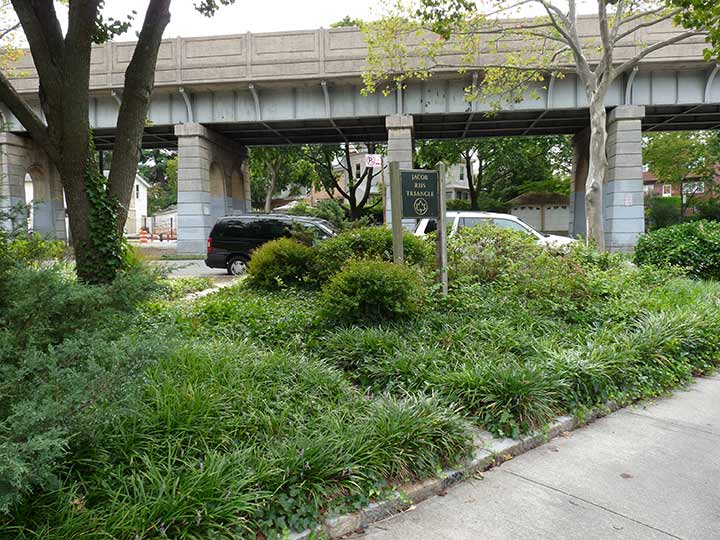
LIKE a favorite book or movie that you reread or rewatch, there are some NYC neighborhoods I return to again and again because there are infrastructural or historical aspects I am fascinated with, and some areas I keep finding new things never suspected before. Richmond Hill is one such area; I have not been past in a few years, but hopefully this year, we’ll see.
Jacob Riis triangle, at 85th Avenue, 116th and Babbage Streets, is named for crusading journalist and photographer Riis (1849-1914) who made his home in Richmond Hill, Queens, beginning in 1886. In 1887, Riis photographed the squalid, inhumane conditions prevalent in New York City’s tenements, and his 1890 book “How The Other Half Lives” has become an influential text to the present day. His cause was taken up by Police Commissioner Theodore Roosevelt, who encouraged legislation that would help ease the burden of NYC’s poorest.
Roosevelt himself has a Richmond Hill connection. Developer Albon Man donated land for the Church of the Resurrection, facing 118th street just south of 85th Avenue, Richmond Hill’s first church. A small wooden Gothic Revival building was built by architect Henry Dudley in 1874; the structure is preserved within the present French Gothic stone building, which was finished in 1904, though further extensions continued until 1926. Jacob Riis was a parishioner, and Roosevelt attended Riis’ daughter Clara’s wedding to Dr. William Fiske on June 1, 1900. The Seal of the President of the USA can be found under the two arched stained glass windows above the entrance on 118th.
In his autobiography Riis wrote of finding Richmond Hill: “It was in the winter when all our children had the scarlet fever that one Sunday, when I was taking a long walk out on Long Island where I could do no one any harm, I came upon Richmond Hill, and thought it was the most beautiful spot I had ever seen, I went home and told my wife that I had found the place where we were going to live.…I picked out the lots I wanted. So before the next winter’s snow, we were snug in the house, with a ridge of wooded hills, between New York and us. The very lights of the city were shut out. So was the slum and I could sleep.” Riis’s house was placed on the National Register for Historic Places, but such a designation does not protect a property. The home was torn down in the mid-1970’s and replaced with a row of attached brick houses.
The structure in the rear of the picture is a handsome elevated ection of the Long Island RR Montauk branch. To me it is an amazing piece of infrastructure and I dedicated a complete page to it. As “recently” as 1998 (the years are speeding by and as of this writing it’s 26 years ago) the line carried at least some passenger traffic, but today it’s all freight. There’s not much demand for interborough transit between Jamaica and Long Island City, and various proposals to revive passenger service have been rejected. This, among other factors, makes the proposed light rail interborough line connecting Bay Ridge and Jackson Heights, mostly along existing rail rights of way, iffy at best at least from my perspective.
As always, “comment…as you see fit.” I earn a small payment when you click on any ad on the site. Take a look at the new JOBS link in the red toolbar at the top of the page on the desktop version, as I also get a small payment when you view a job via that link.
2/1/24


3 comments
I used to live in that area. The church is lovely. What is the address of Riis’s home ?
If I recall, that’s right around the location of one of the scenes in GoodFellas where Ray Liotta describes what happened to some of the other participants in the Luffthansa heist who kept pestering Robert DeNiro for their slice of the pie.
I thinkit was the influence of Riis’s photos that made city planners declare no more alleys in manhattan,
as they were seen as incubators of crime.They had names like Bandits Roost,Spill your Guts Lane and
The Slit Throat so no wonder